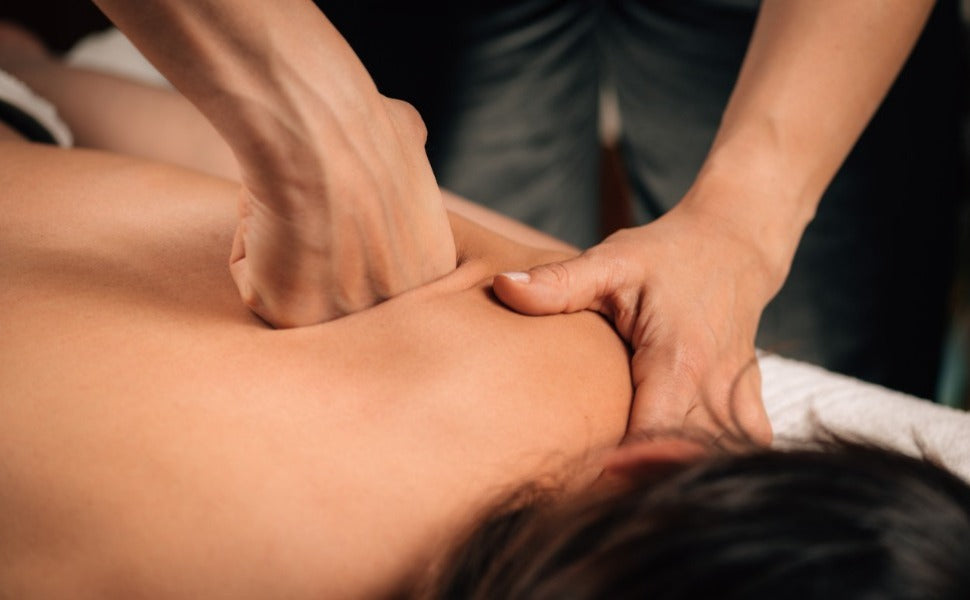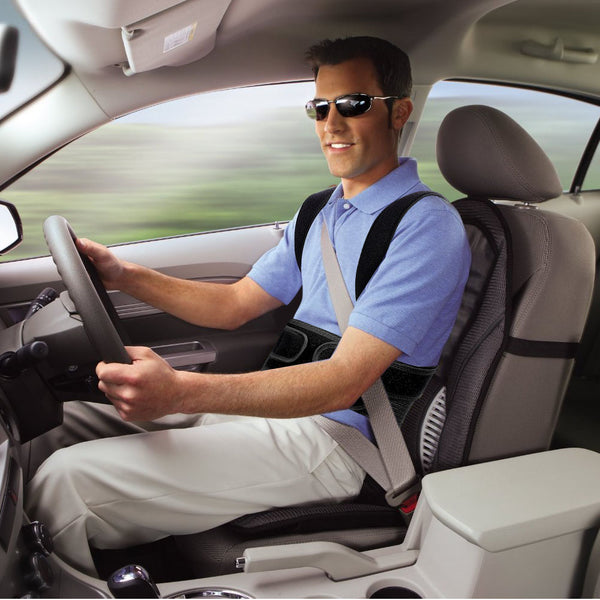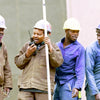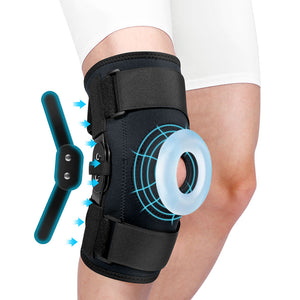How Do You Know if You Need a Best Back Brace

back brace, look for chronic back pain, poor posture, or a restricted range of motion. Make changes to your sitting posture and daily activities to see if that helps alleviate the pain; when it does not, it is best to consult with your doctor to see if a brace may be required to offer support and promote good posture.
Signs of Need
The cue to whether you need a back brace comes when you realize that the discomfort or pain has reached a threshold where you actually do need external support. A back brace can support the spine, help relax tense muscles, and reduce disc pressure and movement in exercise, recovery, or work. In some cases of back conditions, such as herniated discs or spinal instability, a brace is able to offer good protection.
If your back constantly hurts, especially after periods of sitting or standing, this could be the telltale sign that invisible damage is going on within the spine. Long periods in any one position put excessive stresses on discs and muscles, and external support helps to distribute those burdens, relieving pressures on your back. The spinal back brace can prevent misalignment of the spine, especially for outward workers who always have to bend or lift heavy weights. A brace can also be helpful in supporting the spine and posture in the case of office workers or students who are forced to sit long hours.
With long-term neglect, back fatigue and pains may cause structural damages, altering the spine's natural curvature and giving way to scoliosis or other problems. In this case, with the use of a , one can improve their discomfort and thus support their daily life and activities by stopping back problems from worsening.
Types of Braces
Major types of back braces are numerous; each designed on the notion of their purpose and, therefore, functionality differs. Each type provides different support principles according to the needs at hand.
-
Lumbar Brace: This brace focuses attention on the lower back and, as such, on the lumbar region; it is very commonly used for herniation of the lumbar discs, chronic pain in the lower back, and other issues related to the lumbar. One way a lumbar brace can stabilize the spine is by increasing the pressure around the lumbar region, thus lessening the load on the discs. Often, their construction includes support bars and compression straps for effective control of the movements of the lumbar, hence relieving pain in the lower back.
-
Full Back Brace: The full back brace is suitable for those needing comprehensive support and ranges in coverage area from the shoulders down to the lower back. Its major goal is to correct posture, while limiting both upper and lower back movements, which makes it suitable for all kinds of patients suffering from scoliosis, pain in the upper back, or patients whose case requires protection all over. The full back brace distributes the spinal load well and prevents further deformation. It's a good choice for patients with chronic back problems.
-
Posture Corrector Brace: The design is simple, and this posture corrector is primarily for maintaining natural upright posture. Primarily, it focuses on the upper back area, tugging shoulders back with external force to maintain the spine's correct natural curve. This posture corrector brace suits people suffering from minor hunching or spinal tilt caused by work or certain lifestyle habits. Consider the for enhanced posture support.
-
Sports Brace: Most sports braces are usually elastic to offer moderate support during exercises with flexibility. They are ideal for athletes who need stability and flexibility in their sporting activities. The outcome of the use of sports braces can lead to a major reduction of pressure on muscles and ligaments, hence reducing the chance of a sports injury, particularly in high-impact sports such as weightlifting and running.
-
Rigid Brace: This type of brace is rigid in nature; hence, the materials used are majorly plastic or metallic frames. This kind of brace allows for zero movement of the spinal region. The general areas where this is applied include post-operative recovery, management of fractures, and any other type of condition that would necessitate absolute stability. A rigid brace can facilitate recovery and healing of the spine by completely limiting movements, making it indispensable during the post-operation recovery period.

Pain Indicators
Pain acts like a warning system to the body, and in relation to the spine, different types of pain commonly signal the severity of back conditions and the most suitable forms of treatment. In general, back pain can be divided into two categories: acute pain and chronic pain.
Acute pain is normally brought on by temporary trauma or strain, such as sudden injury occurring during sports activities, and the condition can be cured by rest or local treatment. However, chronic pain is most times related to more serious structural problems such as disc degeneration and arthritis. Chronic pain often requires more comprehensive treatment.
If the pain gets worse with a postural position or movement—for example, those which include bending or twisting—or if radiating pain exists, such as pain extending to the buttocks or legs, it’s generally indicative of lumbar disorders. Sciatica symptoms, for example, often present themselves in patients with lumbar disc herniation.
It is equally important to be watchful for changes in pain, like morning stiffness and pain, which could indicate muscle issues, and aching after long periods of sitting, which may indicate disc problems.
Posture Issues
Bad posture, leading to back problems, has become a common feature in modern life. With poor sitting posture, constant use of computers, and looking down into phones, abnormal spinal curvature conditions are acquired by many. The normal physiological curves of the spine—cervical lordosis, thoracic kyphosis, and lumbar lordosis—can be preserved by an individual. However, poor long-term postures—such as excessive tilting of the head forward or hunching of the back—lead to nonsymmetrical curving of the spine, thereby placing additional stress on certain regions of the spine.
The problems created by posture are usually cumulative: from slight discomfort, through chronic pain, to structural spinal deformity, such as scoliosis or spine tilt. Chronic poor posture can also result in muscle imbalance around the spine, thereby increasing muscle tension on the back, neck, and shoulder areas. This could be improved with a that would help limit abnormal movements of the spine and gradually train the body to stay within the context of a normal posture.
Slight traction, as this brace is able to exert on both shoulders and back, helps users maintain the spine's natural curve in daily activities, avoiding further posture-related issues.
Doctor’s Advice
Whether to use a back brace depends on the doctor's advice; for patients whose condition of the back is diagnosed by a doctor, recommendations will be based on the results of imaging examinations (including X-rays, MRI) and physical examination and symptom analysis to determine whether a back brace is necessary. Although the back brace has many advantages in support and correction, improperly using a back support will lead to excessive muscle dependence, thus weakening the back muscles.
Physicians' recommendations can vary according to the kind of back problem; thus, for patients with scoliosis, the full back brace may help them maintain the spine's normal curve. Most postoperative patients will require a rigid brace holding the spine in place to enable it to heal over time. In chronic lower back pain situations, for example, a doctor could prescribe a lumbar corset as a short-term intervention to prevent dependency over the long term.
Complementing that, doctors' advice also involves the duration for which one needs to wear the brace, mostly dependent on the condition and daily needs. Generally speaking, long use of a back brace can weaken the muscles in one's back; therefore, doctors have proposed gradually reducing usage time to allow muscles time for normal functioning again.
Daily Discomfort
It can be induced through leading a sedentary lifestyle, overexertion of the back muscles, or even poor posture. A back brace is very effective in ending daily aches, especially for people who have to remain in static postures for hours on end, like office workers and drivers. If one is sitting or standing for a long time, there will be unequal distribution of pressure on the spine, leading to abnormal tension on the muscles at the back, even developing excessive disc pressure, resulting in pain and stiffness.
Wearing a back support can distribute the pressure during daily life, especially in situations that demand keeping posture for extended periods or even heavy lifting. A back brace increases support to allow the spine and muscles to relax and rest appropriately during activities, reducing accumulated fatigue. Besides, moderate support will avoid the tension of muscles caused by bad posture and provide the outer support needed for the back.
While the accessory helps, to preserve health in your back, a combination of proper exercise, like core strength training and flexibility exercises, is significant. The only thing the brace can do is help ease daily pain, and if you depend on it in the long run, the muscles may atrophy. So, along with using the brace every day, it is equally important to develop correct sitting and standing postures.
Buying Tips
When choosing a back brace, it is essential to consider the proper size, materials, and functional needs. Here are some key factors:
-
Size: The size of the back brace is to be selected according to waist circumference, chest circumference, etc., in such a way that it should fit the body for ample support and comfort. This could lead to ineffective results if worn either too tight or too loose; too tight, it may hamper blood circulation; too loose, it cannot offer the right kind of support.
-
Material and Breathability: The breathable materials matter the most when it comes to long-term wear. You can consider buying a brace that has breathable mesh fabric for better wearing comfort with breathable skin; this will make it less irritating. If it is too heavy, after a long period of time wearing it, it will make your skin uncomfortable in hot conditions.
-
Adjustability: Good-quality back braces have functions that allow the wearer to adjust the tightness of the brace according to personal needs. An adjustable brace would fit better on the body, and this allows users to easily adjust support for different activities without being overly restrictive or affecting comfort during movement.
-
Functional Needs: There are different designs for various functions, including braces for the lumbar, full back, sports, amongst others. The type of brace chosen depends upon the needs the person is facing. For example, if the main reason one needs it is just to improve his or her posture, then a posture corrector brace would do; however, in cases of lower back pain or some problem with the lumbar, then a lumbar brace is what one shall look for.
Back brace selection varies from person to person; it is best to choose according to personal physical condition and needs, avoid excessive dependency, and incorporate regular exercise to strengthen muscles and maintain a healthy lifestyle.
-
Posted in
Brace














